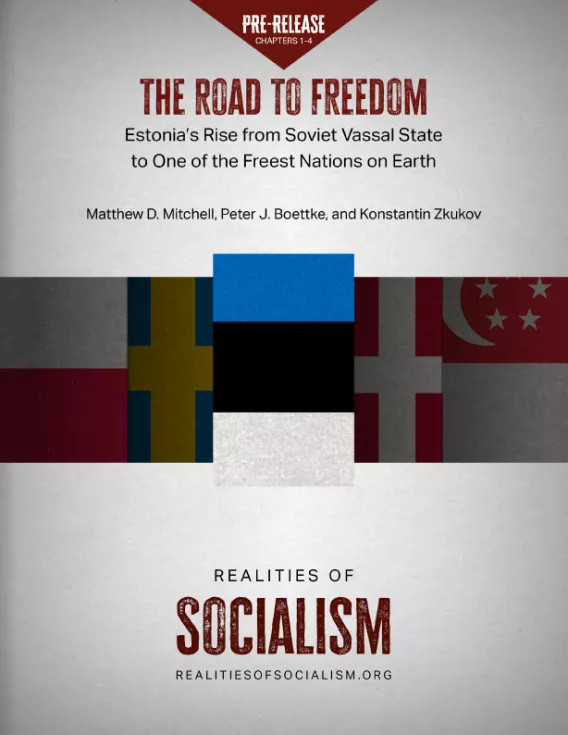- | F. A. Hayek Program F. A. Hayek Program
- | Books Books
- |
The Road to Freedom: Estonia’s Rise from Soviet Vassal State to One of the Freest Nations on Earth
Published by Fraser Institute

Estonia is a testament to the productive and ennobling power of freedom. After waves of successive invasions from East and West, the small and fledgling country on the Baltic Sea was dragooned into the Soviet Union in 1940. There its people, about 1 million in total, were trapped for five decades as unwilling subjects of the socialist experiment. The experiment proved a failure. Rather than equality and prosperity, traditional socialism generated just the sort of economic and social maladies that Marx had predicted for capitalism: economic stagnation, recurrent crises, material and social inequality, environmental exploitation, political repression, and worker alienation.
Eventually, Estonia’s workers and intellectuals decided they had nothing to lose but their chains. So, they joined hands—literally—in revolt. Contrary to Marx’s expectations, when it finally arrived, the revolution was against socialism, not capitalism. And contrary to everyone’s expectations, it was a mostly peaceful revolution. Astonishingly, the totalitarian regime that ruled over a fearful nation for a half century was felled not by bullets but by song and clasped hands. In its place, the Estonians created one of the freest nations on Earth. In contrast with others who had been trapped behind the Iron Curtain, the Estonian break from socialism was swift and bold. It avoided the long, fitful, and often corrupt transition that bogged down so many other nations. Thus, reformers maintained both the momentum and the moral legitimacy of their efforts.
Finally free, the Estonians thrived, achieving a degree of prosperity and equality promised but never realized under socialism. In this book we recount the fall and rise of Estonian freedom. Though the events we relate took place more than a generation ago, we believe that they hold important lessons for today. They demonstrate the economic, social, and moral value of economic and personal freedom. They show that when governments deprive their people of freedom, they often do so in a grossly discriminatory way. Despite the widely held belief that freedom and equality are incompatible, something of the opposite is true: government dominion and discrimination often go hand-in-hand. This means that, at least for a time, some segments of society benefit handsomely from the repression of others, and these beneficiaries will fight fiercely to maintain the status quo, making change seem impossible. This dynamic explains the persistence of much milder deprivations of economic freedom in Western nations today.
But Estonia found a way out of this trap. And we can learn from their experience. We begin with a brief introduction to Estonian national identity and Estonia’s 19 years of independence before Hitler and Stalin turned the country into a battlefield. We then discuss the Soviet occupation and socialist experiment from 1944 to 1991. We believe that the best way to understand this experience is to compare Estonia’s economic development with that of comparatively free Finland across the Gulf of Finland. Finally, we discuss Estonia’s remarkable transformation from socialist vassal state to one of the freest nations on Earth.
Additional Details
Learn more about the book here.

